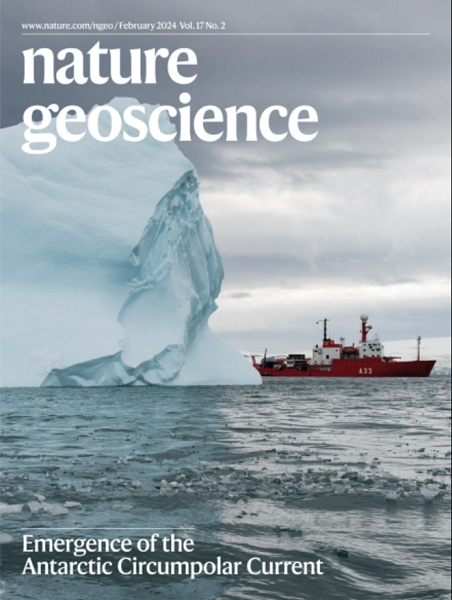The global distribution and dynamics of surface soil moisture
IF 15.7
1区 地球科学
Q1 GEOSCIENCES, MULTIDISCIPLINARY
引用次数: 282
Abstract
Surface soil moisture has a direct impact on food security, human health and ecosystem function. It also plays a key role in the climate system, and the development and persistence of extreme weather events such as droughts, floods and heatwaves. However, sparse and uneven observations have made it difficult to quantify the global distribution and dynamics of surface soil moisture. Here we introduce a metric of soil moisture memory and use a full year of global observations from NASA’s Soil Moisture Active Passive mission to show that surface soil moisture—a storage believed to make up less than 0.001% of the global freshwater budget by volume, and equivalent to an, on average, 8-mm thin layer of water covering all land surfaces—plays a significant role in the water cycle. Specifically, we find that surface soil moisture retains a median 14% of precipitation falling on land after three days. Furthermore, the retained fraction of the surface soil moisture storage after three days is highest over arid regions, and in regions where drainage to groundwater storage is lowest. We conclude that lower groundwater storage in these regions is due not only to lower precipitation, but also to the complex partitioning of the water cycle by the surface soil moisture storage layer at the land surface. Soils have the capacity to store water at the land–atmosphere interface. Analysis of global satellite data suggests that significant precipitation can be retained by soils, leading to even less groundwater storage in water-starved regions.

地表土壤水分的全球分布与动态
地表土壤水分对粮食安全、人类健康和生态系统功能有着直接影响。它在气候系统以及干旱、洪水和热浪等极端天气事件的发展和持续方面也起着关键作用。然而,由于观测数据稀少且不均衡,很难量化地表土壤水分的全球分布和动态变化。在这里,我们引入了土壤水分记忆指标,并利用美国国家航空航天局(NASA)的土壤水分主动被动任务全年的全球观测数据表明,表层土壤水分--一种被认为占全球淡水预算体积不到 0.001%的储量,相当于平均覆盖所有陆地表面的 8 毫米薄水层--在水循环中发挥着重要作用。具体来说,我们发现地表土壤水分在三天后可保留降水量的中位数 14%。此外,在干旱地区,三天后地表土壤水分储存的保留率最高,而在排水到地下水储存量最低的地区,地表土壤水分储存的保留率也最高。我们的结论是,这些地区地下水储量较低的原因不仅在于降水量较少,还在于地表土壤水分储存层对水循环的复杂分区。土壤具有在陆地-大气界面储水的能力。对全球卫星数据的分析表明,大量降水可被土壤保持,导致缺水地区的地下水储存量更少。
本文章由计算机程序翻译,如有差异,请以英文原文为准。
求助全文
约1分钟内获得全文
求助全文
来源期刊

Nature Geoscience
地学-地球科学综合
CiteScore
26.70
自引率
1.60%
发文量
187
审稿时长
3.3 months
期刊介绍:
Nature Geoscience is a monthly interdisciplinary journal that gathers top-tier research spanning Earth Sciences and related fields.
The journal covers all geoscience disciplines, including fieldwork, modeling, and theoretical studies.
Topics include atmospheric science, biogeochemistry, climate science, geobiology, geochemistry, geoinformatics, remote sensing, geology, geomagnetism, paleomagnetism, geomorphology, geophysics, glaciology, hydrology, limnology, mineralogy, oceanography, paleontology, paleoclimatology, paleoceanography, petrology, planetary science, seismology, space physics, tectonics, and volcanology.
Nature Geoscience upholds its commitment to publishing significant, high-quality Earth Sciences research through fair, rapid, and rigorous peer review, overseen by a team of full-time professional editors.
 求助内容:
求助内容: 应助结果提醒方式:
应助结果提醒方式:


